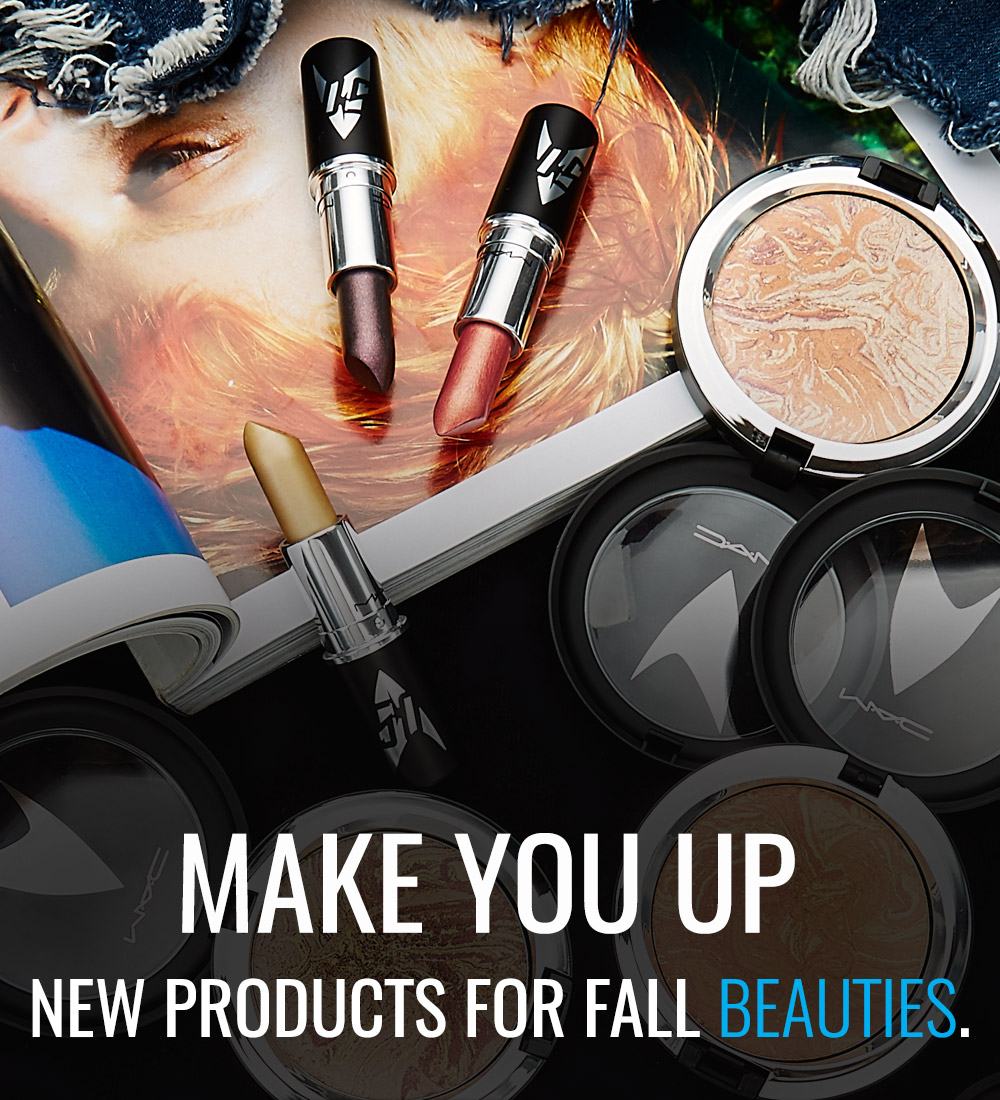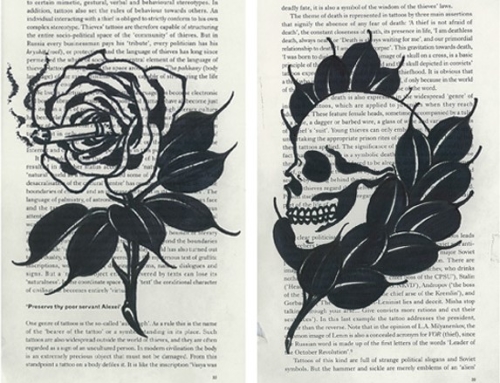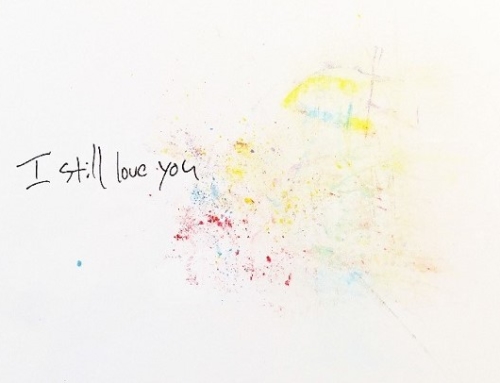Frida Kahlo’s impact on the 21st century’s artistic realm is undeniable. It is apparent in the multiple decades of artists who have followed Kahlo’s evocative dive into historic Mexican imagery, such as renowned artist and cultural commentator, Enrique Chagoya. While outside of the fine arts in fashion, Frida’s creative vision reverberates in the archives of any number of seasons that boast the weight of her influence in designers’ bold use of colour, Mexican textile tradition, and statement design. Most recently, Kahlo’s spirit has floated into designer Peter Pilotto’s robust SS13 ready-to-wear collection, the brightly-coloured, flower crowned heels of Charlotte Olympia‘s Cruise collection; and the distinct hair and makeup seen on the runway at Vivienne Westwood‘s SS13 show at London Fashion Week.
Kahlo’s name hangs thick in the air. From last November’s Vogue Mexico cover featuring Hungarian-born American photographer Nickolas Muray’s portrait of the artist from 1939 to the ongoing exhibit Appearances Can Be Deceiving: The Dresses of Frida Kahlo at the Museo Frida Kahlo in Coyoacan (which prompted the Vogue Mexico’s cover) to Toronto’s Art Gallery of Ontario’s (AGO) ode to the life and work Kahlo shared with husband and fellow artist Diego Rivera, Frida & Diego: Passion, Politics and Painting, it would seem that 64 years after her death, the enigma that was Frida Kahlo continues to beg examination.
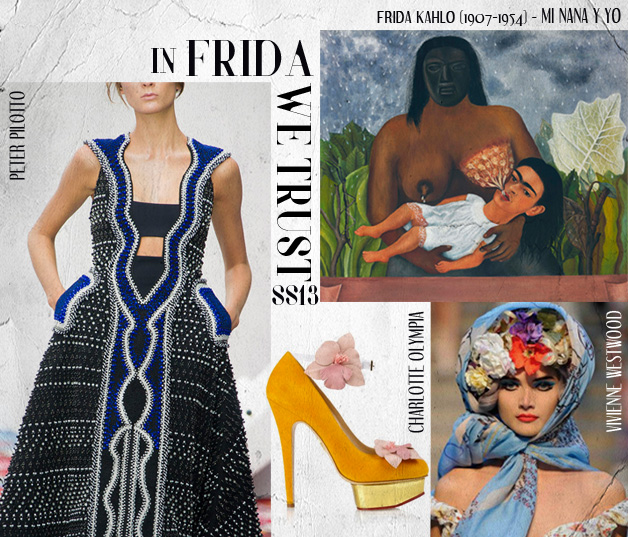
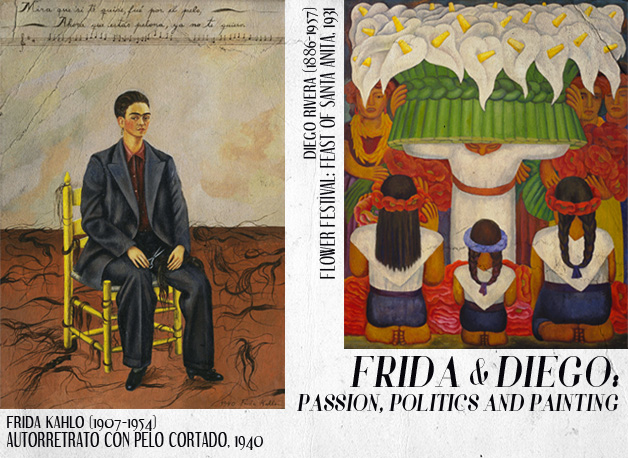
With the latter exhibit showcasing more than 80 works (paper and paintings) by Kahlo and Rivera, one quarter of Kahlo’s entire body of work and a wide range of Rivera’s painting styles including his famed murals hang alongside photos documenting the couple’s story, taken by celebrated friends such as the aforementioned Murray. The exhibit is rare opportunity for Kahlo enthusiasts to explore the passion and politics that charged her vision as an artist, and the relationship that cultivated both essentials in her life.
For Montreal-based jewelry designer Julia Vallelunga of the La Raffinerie accessory label, Kahlo has been an inspiration both as a woman and an artist. “Frida Kahlo had a very unique style, especially for the period she lived in. She had a daring style and didn’t care what people thought,” she says. The impact Kahlo’s personal style has had on Vallelunga’s vision is evident in the vibrancy of her handcrafted jewelry, as it is in the exotic whimsy of her designs. For the designer, Kahlo’s iconic display of colour and flowers strewn over her person are embedded in her creative psyche, particularly the image of the artist captured in her self-portrait, “The Frame,” which Vallelunga counts as a favourite. “Her flower crown inspired me,” she shares, as one can plainly see from the designer’s body of work, including her latest SS13 collection.

The significance of Kahlo is one that is ever expanding, a fact that is being examined under the scope of transformative political and cultural values in the AGO’s ongoing exhibit; an exhibit that also effortless presents what is impossible to hide: the late artist’s legacy as a style influencer and great challenger of conventional views of feminine beauty.
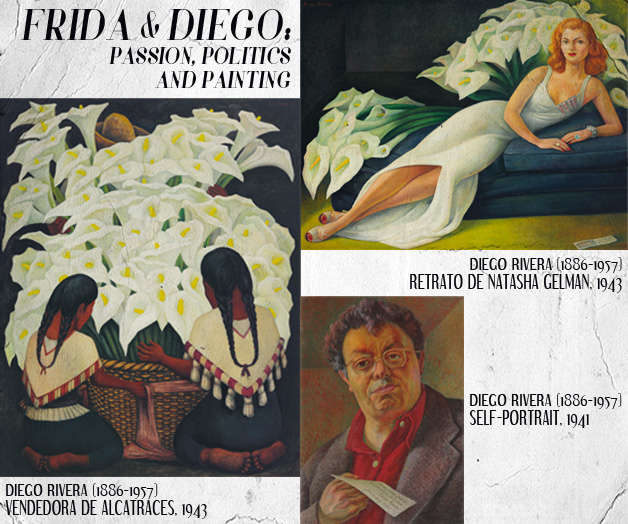
Ending January 20th (with extended hours), fans of Kahlo won’t want to miss the exhibit’s last days, or the opportunity to learn more about the relationship that inspired some of the artist’s greatest passions and the man with whom she shared her artistic, political, and life vision.
For more information on the AGO or tickets to the Frida & Diego: Passion, Politics and Painting exhibit, visit ago.net.





